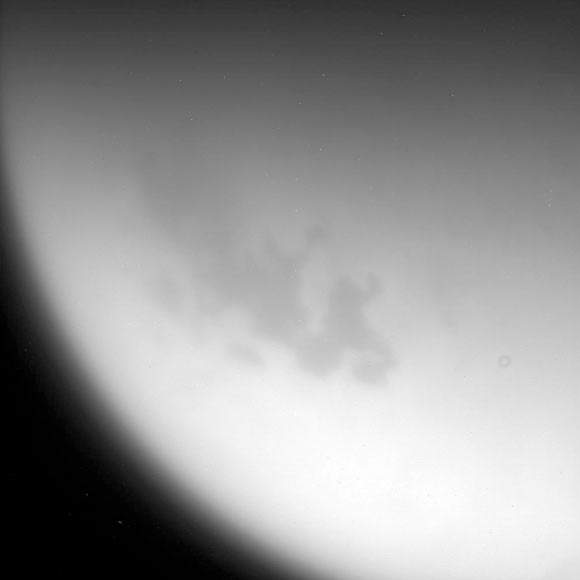NASA’s Cassini robotic orbiter successfully made ‘goodbye kiss’ flyby of Saturn’s hazy moon Titan on September 11, 2017, at 3:04 p.m. EDT (12:04 p.m. PDT).

This unprocessed image of Titan was captured by NASA’s Cassini spacecraft during its ‘goodbye kiss’ flyby of the hazy, planet-sized moon on September 11, 2017. Image credit: NASA / JPL-Caltech / Space Science Institute.
“Cassini has been in a long-term relationship with Titan, with a new rendezvous nearly every month for more than a decade,” said Cassini project manager Dr. Earl Maize, of NASA’s Jet Propulsion Laboratory.
“This final encounter is something of a bittersweet goodbye, but as it has done throughout the mission, Titan’s gravity is once again sending Cassini where we need it to go.”
At the time of the closest approach, Cassini was 73,974 miles (119,049 km) above Titan’s surface.

This unprocessed image was captured by Cassini during its ‘goodbye kiss’ flyby of Titan on September 11, 2017. Image credit: NASA / JPL-Caltech / Space Science Institute.
This distant encounter is referred to informally as ‘the goodbye kiss’ by Dr. Maize and colleagues, because it provides a gravitational nudge that sends the spacecraft toward its dramatic ending in Saturn’s upper atmosphere.
The geometry of the flyby causes Cassini to slow down slightly in its orbit around Saturn.
This lowers the altitude of its flight over the planet so that the spacecraft goes too deep into Saturn’s atmosphere to survive, because friction with the atmosphere will cause Cassini to burn up.
Cassini has made hundreds of passes over Titan during its 13-year tour of the Saturn system — including 127 precisely targeted encounters — some at close range and some, like this one, more distant.







